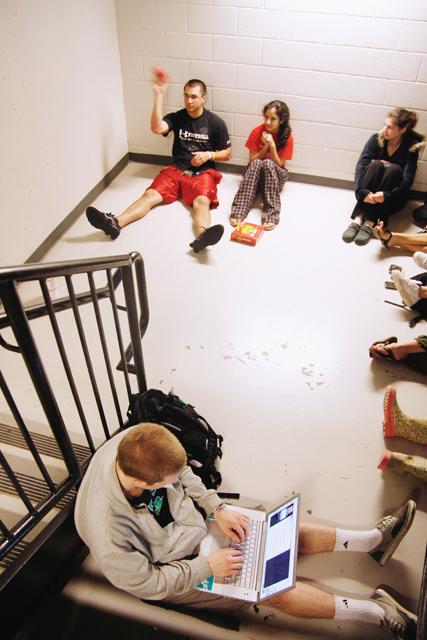
Tim O'Brien
Students who were in dorms on campus got quite the scare Saturday afternoon when one of the biggest storms to ever hit North Carolina blew directly past campus. Resident advisors in the dorms followed housing procedures in an effort to keep all students safe.
According to Derek Spicer, a resident advisor in Turlington Hall, an RA’s first job is student safety.
“We are supposed to evacuate students to a basement area or to the best and safest area possible. Our first priority is keeping students safe,” he said.
Although University Housing does have official policies and procedures for what to do in the event of a weather emergency, Spicer said that resident advisors are not officially trained in what to do. They have been taught the procedures but have no formal training.
“Housing does have a policy for it, but RA’s are not formally trained. They informed us of what to do when the storm showed signs of getting worse,” Spicer said.
Despite the lack of formal training for weather emergencies, Spicer said that he thinks the resident advisors are capable of doing a good job.
“As long as housing effectively communicates with us, it’s okay,” Spicer said.
In the event of adverse weather, resident advisors are instructed to lead the residents to the most secure place available in the dorm. For dorms likeTurlington and Alexander, students are moved to the basement. In the tri-towers, students are supposed to be moved to lower floors and away from all windows. Resident advisors gather flashlights and check for flooding after they ensure that all of the residents are safe and accounted for.
Some students were uninformed of the adverse weather during the storm, according to Spicer. A few students thought that resident advisor’s were joking when they asked them to move to the basement for safety, but all complied in the end.
“Some people didn’t think we were serious, but nobody actually refused to move,” Spicer said.
Michael Styron, a freshman in computer engineering, said that he was concerned for his safety during the storm. A resident in Metcalf Hall, Styron said that he was moved to the center of his floor away from the windows with the other residents who were home on the 10th floor. Despite being moved away from the windows, Styron said that he was uncomfortable being up so high during the storm.
“If something had happened to the top floor it wouldn’t have been safe. I suggested leaving because a fall from ten stories just can’t end well,”Styron said.
Styron moved to a lower floor with some of his fellow residents. Austin Teague, a freshman in biomedical engineering who also lives in Metcalf, said that his resident advisor moved everyone on his floor down to a lower floor during the storm.
“I thought the RAs seemed really on top of everything, especially since it didn’t seem like a big issue at first. It took awhile to tell that it was serious,” Teague said.
One problem that Ivan Herrera, a junior in political science, had with the procedures during the storm was a lack of understanding on the residents part. Students did not have prior knowledge of how to react or behave during the evacuation process, according to Herrera.
“It would be nice to know what we would have been doing from the beginning. Given a flyer of instructions like in an airplane. But I thought they still did a pretty good job,” Herrera said.
Despite the procedures being somewhat unclear, Herrera said that he felt relatively safe during the storm. The resident advisors reacted quickly and efficiently to the storm, he said.
“I felt pretty safe. I felt like they did the best they could do,” Herrera said.